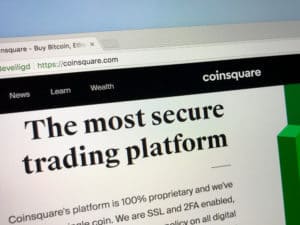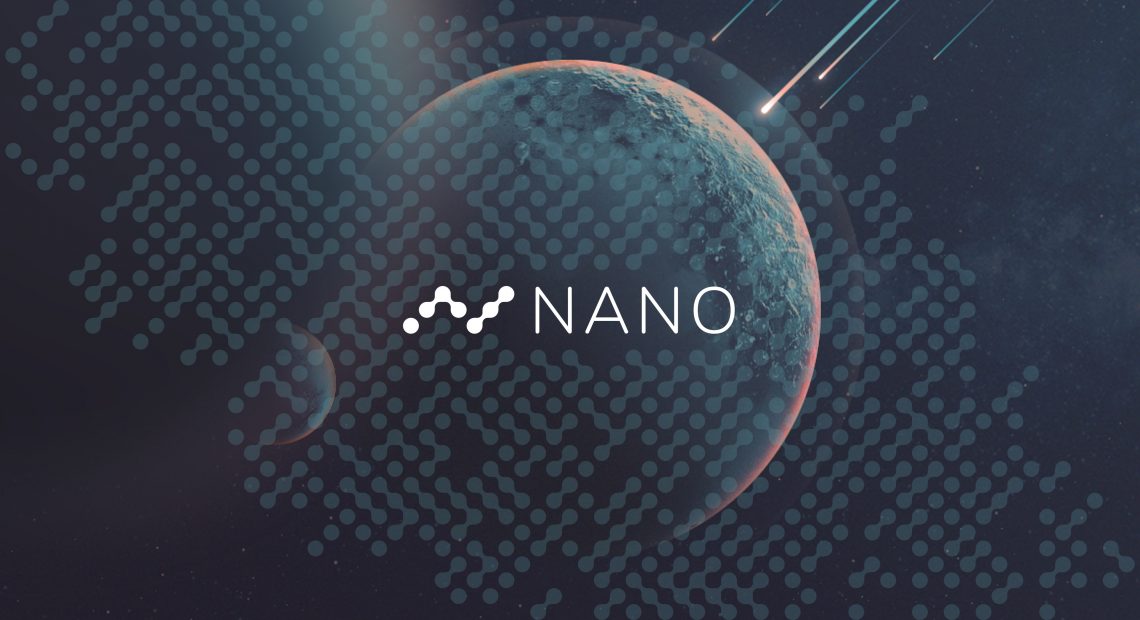
2018-11-16 23:30 |
What Is Dash?
Dash is an open-source cryptocurrency and decentralized autonomous organization that forked from Litecoin. It aims to overcome Bitcoin’s shortfalls in governance, consensus, and speed. As a payment system, Dash is expanding its presence in Latin America, hoping to resolve payment and remittance issues from Mexico to Brazil.
Dash touts itself as self-governing, self-funding, and the fastest growing platform. It’s not necessarily wrong on any of these counts. Although not fully unique, Dash is a solid project that forged a lot of solid partnerships.
Introduction To DashNodes must own 1000 DASH, have a static IP, and meet minimum system requirements of CPU, RAM, available disk space, and network bandwidth to become masternodes, which govern the network. It underwent several rebrandings before landing on DashPay, which launched in January 2014 in Phoenix, AZ by Evan Duffield.
Actually, we should say Xcoin was created in January 2014 by Duffield, before several rebrandings of this altcoin occurred (including Darkcoin) to make it the DashPay we know today. Dash is (and is also a portmanteau of) digital cash, and it’s a decentralized autonomous organization (DAO), meaning it’s governed and maintained by its users with no central authority.
Dash’s DAO funded over $33 million worth of Dash to projects ranging from Arizona State University’s (where I went to college, by the way) Blockchain Research Laboratory, cannabis payment platform Alt Thirty Six, and the country of Venezuela.
It’s not just name-dropping investors and partners either – already, the Dash DAO approved a 30 Dash payment to sequence a cannabis genome and publish it on the blockchain to bypass the traditional scientific publishing market. Dash DAO is also gearing up to launch a venture fund in the next year.
And on a performance level, it’s already confirmed 591,166 transactions in a 24-hour period, over 100,000 more than Bitcoin’s December 2017 high.
Dash has aggressive expansion plans that include gaming, Mexico, and credit cards. If it can achieve even half of what it’s setting out to do, it’ll remain a dominant cryptocurrency into the foreseeable future. Before explaining why, let’s review DashPay’s DASH coin performance on the crypto market.
Breakdown of DASH TokenThere’s currently a circulating supply of 8,440,664 DASH (out of a total supply of 18,900,000) as of November 12, 2018. The peak price of DASH was $1,541.99, which occurred on December 20,2017.
Dash is mined using an X11 algorithm, which is a modified Proof-of-Stake system that uses Conjoin mixing to encrypt, anonymize, and privatize transactions. This makes it a competitor for privacy coins like Komodo, ZCash, Monero, and Verge.
In PoS mining, DASH is rewarded to those holding it, and both mining and masternode pools are available. In addition, DASH is paid as a fee to Masternodes to process smart-contract transactions on the Dash blockchain.
Block rewards are split between Masternodes (45 percent), Miners (45 percent), and Treasury (10 percent). The Treasury uses these funds for future development projects and to help fund the DAO’s investments as necessary. The full 18 million cap won’t be reached until the year 2300.
DASH is tradeable on most major markets, including ZB.com, YoBit, HitBTC, Huobi, Binanc, Exrates, and many more. Its trading pairs include BTC, USDT, ETH, BCH, and other crypto and fiat currencies on some exchanges. Over $200 million in DASH is traded every day.
Dash is open-source, with its own blockchain and support for desktop, mobile, hardware, and paper wallets.
In addition, like Bitcoin and Litecoin, DASH is actually a spendable currency (a rarity in crypto), with more retailers accepting it as payment every day.
Unclogging Bitcoin’s BlockchainThe key to Dash’s success lies in Masternodes. Bitcoin was left open-ended, which led to ASIC mining company Bitmain owning 40 percent of the network’s mining stake. The 4,719 Masternodes processing Dash’s full blockchain retain verification and validation power.
This greatly reduces the number of nodes needed to process network transactions. It also maintains a power circle of trust among Masternodes, which must maintain at least 1000 DASH to participate.
Transaction fees are much lower than Bitcoin or Ethereum’s, and, unlike privacy coins like Komodo, founder Duffield, CEO Ryan Taylor, CTO Andy Freer, and other members of the team don’t mind revealing themselves to the public.
As pointed out by Leigh Cuena at Coindesk, even if Dash fails, its focus on emerging economies in Africa, South America, and around the world will leave a lasting impact.
Venezuela became the second biggest market for Dash among volatile pricing of its own currency. The country saw a 1,000,000 percent rise in inflation in 2018, leaving many short of being able to even afford groceries. Merchant acceptance in the country is on the rise too.
Activists, academics, entrepreneurs – these are the people Dash is helping, and it’s a model for what blockchain projects should aspire to be. The project continues drawing investments and partnerships from companies looking to do good for the community.
Building a Crypto Retail EcosystemWe’ve also covered Dash in-depth in our Crypto Briefing Digital Asset Report, which I highly recommend reading if you’re interested in the project’s nuts and bolts. What I’m going to cover is how Dash is penetrating the market to gain merchant acceptance.
Have you ever walked into a bar or restaurant without your wallet and tried using your phone to pay?
It isn’t easy (at least not where I live in Tucson, just south of Dash’s hometown of Phoenix on I-10). But Dash seems to have figured out a magic formula.
It’s accepted at over 3000 merchants and even has a presence in the cannabis space through Alt Thirty Six and its blockchain-based point-of-sale system. This means Dash is gaining merchant acceptance by creating viable platforms for the merchants to use. It’s a strategic move that will give Dash staying power in years to come.
We’ve covered a bit before about how retail is starting to depend more on both cryptocurrency as a payment and blockchain as a technology, despite pricing fears of volatile pricing. In fact, retail is an important end-point in the supply chain, and integrating into the retail PoS is a big win for any technology project, much less a blockchain-focused one.
In fact, prior to Crypto Briefing, I spent several years contributing research and articles to CardFellow in regards to retail POS and payment solutions. It’s a big business, with the retail terminal market alone being worth an estimated $116.06 billion by 2025.
By capturing this market with the DashPay blockchain, the DASH cryptocurrency is an easy add-on.
Funding More Sensible ProjectsAside from research, the DashPay team has a nose for finances too. It partnered with FanDuel to host a Crypto Cup tournament allowing players to pay a $3 entry fee for a basketball fantasy cup tournament with a 15 DASH prize.
It’s also expanding its presence in Latin America, hoping to resolve payment and remittance issues from Mexico to Brazil. In fact, DashPay kicked off 2018 with a partnership with Brazil’s BitINKA crypto exchange, making it more accessible across Central and South America.
DASH can be used to purchase goods and services at a variety of VPN, web hosting, business, gaming, and ecommerce businesses.
Because of its utility and partnerships, Dash is one of the premiere altcoins and as solid of an investment as they come. Of course, it’s not without its haters.
One community member is testing the network’s governance model and pushing for Taylor to step down as CEO. Love or hate him, he’s definitely an advocate of the network and is actively pushing for it in his local Arizona community.
Dash SummaryDashPay is a beefed-up Litecoin fork with improved speed, security, and streamlined processing. The Dash DAO actively invested in university blockchain research, gaming sites, cannabis payments, and third-world economies. These shrewd investments keep adding value to its blockchain network that’s already built on a solid foundation.
Dash uses an X11 PoS mining algorithm and Masternode governance to create a more stable cryptocurrency than Bitcoin. DASH is easily spendable at hundreds of merchants and tradeable at dozens of exchanges, making it a versatile crypto coin. Dash has partnerships with ASU, Venezuela, and more projects that are continuing blockchain research. Dash created a merchant acceptance network through direct partnerships to develop retail PoS and other platforms.With these pieces in place, Dash is a strong contender in the cryptocurrency market. Its value is much more than skin deep in a market filled with vaporware and false promises.
The author is not invested in any coin, asset, or token mentioned in this article. He is, however, an Arizona native rooting for the home team.
The post What Is Dash? Introduction to DASH Cryptocurrency And DashPay appeared first on Crypto Briefing.
origin »Dash (DASH) на Currencies.ru
|
|




























